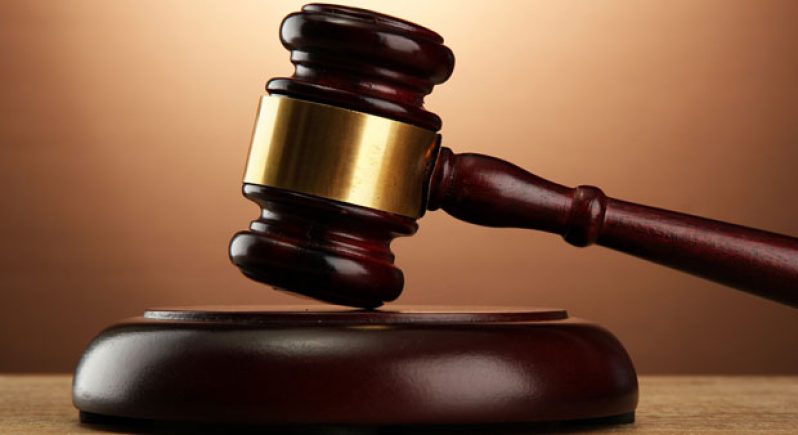IN 1974, Ken Barrow, a man with a scar on the left side of his face, allegedly participated with others in a robbery.
He was identified at an identification parade because he was the only man with a scar on his face. At his jury trial, he was convicted of felonious wounding and robbery under arms, and was sentenced to five years’ imprisonment on each count. The sentences were ordered to run concurrently.
But Barrow was freed by the Guyana Court of Appeal on the ground that the identification parade was not properly conducted.
The Appellate Court, constituted by Chancellor J.O.F. Haynes, with Justices of Appeal Victor Crane and R. H. Luckhoo, considered that the parade was a farce, since there ought to have been more than one scar-faced man on parade.
The facts of the case disclosed that the accused, in company with other men, entered the yard of the complainant, Richard Beharry, and robbed his wife Edna of several pieces of gold jewellery. While three of the men were engaged in robbing Edna inside the house, the accused was aiding and abetting them by holding on to Richard, violently assaulting him outside, and at the same time keeping a look out to facilitate the crime.
After the robbers had departed with their booty, Beharry reported the matter to the police, giving a statement in which he described his attacker as a short, dark, Negro man with a scar on the left side of his face.
The accused was convicted of felonious wounding and robbery under arms, and was sentenced to five years’ imprisonment on each count.
On appeal, the defence counsel complained that, at the close of the case for the prosecution at the Assizes, he had sought leave from the judge to make submissions in the presence of the jury, but the judge had overruled the submission and had said they had to be made in the jury’s absence.
This was a grave irregularity, the defence counsel contended, since the trial judge had no jurisdiction to conduct any part of criminal proceedings in the absence of the jury.
Complaint was also made that the identification parade was unfairly conducted for two reasons –- that it was highly prejudicial to the accused to place him on parade with other persons who did not have scars on their faces; and that it was not made clear to Beharry that the suspect was not necessarily on the identification parade.
Yet another complaint was that inadmissible prejudicial evidence was admitted during the course of the trial, without any warning to the jury to disregard it.
The three judges of the Guyana Court of Appeal had their say as they allowed the appeal and set aside convictions and sentences to free the accused, Ken Barrow.
Chancellor Haynes said: “In the light of very recent authority on what is the correct rule of practice, it cannot be said in the instant case that the trial judge erred in ruling that the submissions should be made in the jury’s absence.
“In any event, no injustice resulted from the judge’s decision to hear the submissions in their absence.
“The identification parade, with the accused as the only man with a scar on the left side of his face, was a farce. It was no test at all, since Beharry could have picked out no other person than the accused.
“The trial judge has a discretion as to whether he should or should not draw to the jury’s attention the presence of inadmissible prejudicial evidence that has been inadvertently let in in the course of the trial.”
Justice of Appeal Victor Crane said: “The summing-up was of little or no help to the jury, in that it did not highlight the vacillating nature of Beharry’s testimony on the matter of the scar as his means of identification.
“It was unfair to mount a parade with the accused as the only suspect with a scar on the left side of his face. Moreover, for the officer-in-charge of it to fail to add a saving clause to the effect that the suspect should be identified only if he is on parade vitiated the conviction and sentence.”
Justice of Appeal R. H. Luckhoo said: “The identification was unreliable. It was incumbent on the trial judge to draw the jury’s attention to all relevant factors as tended to diminish the cogency of the identification.”
The appeal was allowed and the convictions and sentences were set aside.
Thirty cases were referred to by the Court of Appeal in support of the decision.
Attorney-at-law J.A Patterson appeared for the appellant, while Senior State Counsel Mr. L. Ganpatsingh represented the State.
(By George Barclay)













